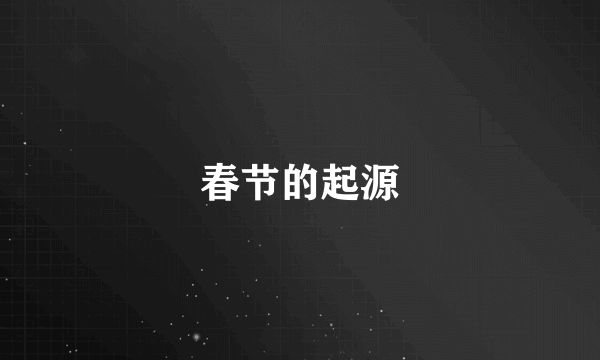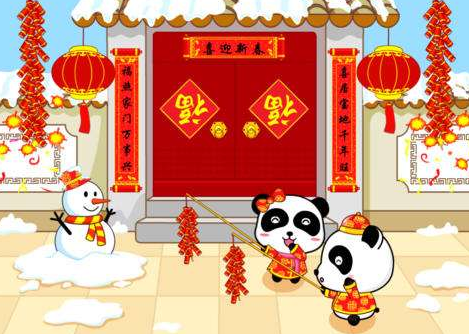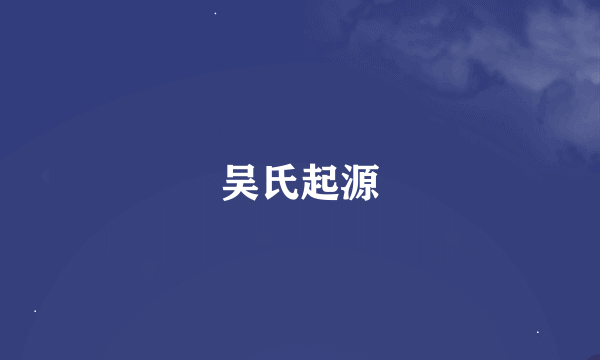春节的起源
的有关信息介绍如下:
春节的起源 据史籍记载,春节在唐虞时叫“载”.夏代叫“岁”,商代叫“祀”,周代才叫“年”。“年”的本义指谷物生长周期,谷子一年一热,所以春节一年一次,含有庆丰的寓意。又传,春节起源于原始社会末期的“腊祭”,当时每逢腊尽春来,先民便杀猪宰羊,祭祀神鬼与祖灵,祈求新的一年风调雨顺,免去灾祸。他们用朱砂涂脸,身披鸟羽,唱跳吃喝,热闹非凡。至于 互相拜年宴请,则起自汉初,对此《通典》有所记载。 历代春节食俗 ※东汉时期,祭祖是春节的重要活动和习俗。据崔提《四民月令》称:“正月之朔,是为正日。躬率妻孥,洁祀祖祢。及祀日,进酒降神毕,乃家室尊卑,无大无小,以次列于先祖之前,子妇曾孙,各上椒酒于家长,称觞举寿,欣欣如也。” ※南朝时期,春节阖家互相拜贺、饮宴,并开展娱乐活动。据粱人宗懔《荆楚岁时记》记载:“正月一日,…长幼悉正衣冠,以次拜贺。进椒柏酒,钦桃汤。进屠苏酒、胶牙饧,下五辛盘。”还有画鸡、燃爆竹、悬索、乞如愿等游戏。 ※唐宋元明清时期春节食俗中的礼仪成分逐渐加重。据南宋吴自收《梦梁录》记载:“土大夫皆交相贺,细民男女亦皆鲜衣,往来拜节”,《梵天庐丛录》记载:“男女依次拜长辈,主者牵幼出谒亲友,或止遣子弟代贺,谓之拜年”;《清波杂志》载:“宋元佑年间,新年贺年,往往使用佣仆持名刺代往”。亲朋拜年,主家必须设宴款待,酒肉异常丰盛。据《嘉泰会稽志》记载:“元旦男女夙兴,家主设酒果以奠,男女序拜,竣乃盛服,诣亲属贺,设酒食相款,日岁假,凡五日而毕。”至清代,《帝京岁时纪胜》云:“士民之家,添衣冠,肃佩带,祀神祀祖;焚楮帛毕,味爽阖家团拜,献椒盘,斟柏酒,扶蒸糕,呷粉羹。出门迎喜,参药庙,谒影堂,具柬贺节。路遇亲友,则降舆长揖,而祝之日新禧纳福”,对于前来拜年春,“纵非亲厚,亦必奉节酒三杯。若至戚忘情,何妨烂醉!俗说谓新正拜节,走千家不如坐一家。而车马喧阗,追欢竟日,可谓极一时之胜也矣”。 春节各地食俗 汉族的春节食俗,一般以吃年糕、饺子、糍粑、汤圆、荷包蛋、大肉九、全鱼、美酒、福橘、苹果、花生、瓜子、糖果、香茗及肴馔为主;并伴有掸扬尘、洗被褥、备年货、贴春联、贴年画、贴剪纸、贴福字、点蜡烛、点旺火、放鞭炮、守岁、给压岁钱、拜年、走亲戚、 上祖坟、逛花市、闹社火等众多活动,极尽天伦之乐。如年夜饭,尤为讲究:一是全家务必聚齐,因故未回者必须留一座位和一套餐具,体现团圆之意;二是饭食丰盛,重视“口彩”,把年糕叫“步步高”、饺子叫”万万顺”,酒水叫“长流水”,鸡蛋叫“大元宝”,金鱼叫“年年有余”;这条鱼准看不准吃,名为“看余”,必须留待初一食用.北方无鱼的地区,多是刻条木头鱼替代;三是座次有序,多为祖辈居上。孙辈居中,父辈居下,不分男女老幼,都要饮酒。吃饭时关门闭户,热闹尽兴而止。 除夕的家宴菜肴各地都有自己的特色。旧时北京、天津一般人家做大米干饭,炖猪肉、牛羊肉、炖鸡,再做几个炒菜。陕西家宴一般为四大盘、八大碗,四大盘为炒菜和凉菜,八大碗以烩菜、烧菜为主。安徽南部仅肉类菜肴就有红烧肉、虎皮肉、肉圆子、木须肉、粉蒸肉、炖肉及猪肝、猪心、猪肚制品,另外还有各种炒肉片、炒肉丝等。湖北东部地区为“三蒸”、“三糕、“三丸”。“三蒸”为蒸全鱼、蒸全鸭、蒸全鸡;“三糕”是鱼糕、肉糕、羊糕; “三丸”是鱼丸、肉丸、藕丸。哈尔滨一带一般人家炒8个、10个或12、16个菜不等,其主料无非是鸡鸭鱼肉和蔬菜。赣南的年夜饭一般为12 道菜。浙江有些地方一般为“十大碗”,讨“十全十福”之彩,以鸡鸭鱼肉及各种蔬菜为主。江西南昌地区一般十多道菜,讲究四冷、四热、八大菜、两个汤。 各地除夕家宴上都有一种或几种必备的菜,而这些菜往往具有某种吉祥的含义。比如苏州一带,餐桌上必有青菜(则安乐菜)、黄豆芽(如意菜)、芹菜(勤勤恳恳)。湘中南地区必有一条一公斤左右的鲤鱼,称“团年鱼”,必有一个3公斤左右的猪肘子,称“团年肘子”。皖中、皖南餐桌上有两条鱼,一条完整的鲤鱼,只能看却不许吃,既敬祖又表示年年有余,另一条是鲢鱼,可以吃,象征连子连孙,人丁兴旺。祁门家宴的第一碗莱是“中和”,用豆腐、香菇、冬笋、虾米、鲜肉等制成,含义为“和气生财”。 合肥的饭桌上有一碗“鸡抓豆”,意思是”抓钱发财”。管家人要吃一只鸡腿,名为“抓钱爪”,意味着明年招财财进宝。安庆的当家人要在饭前先吃一碗面条,叫“钱串子”。南昌地区必食年糕、红烧鱼、炒米粉、八宝饭、煮糊羹,其含义依次是年年高升、年年有鱼、粮食丰收、稻米成串、八宝进财、年年富裕。 北方地区春节喜吃饺子,其寓意团结,表示吉利和辞旧迎新。为了增加节日的气氛和乐趣,历代人们在饺子馅上下了许多功夫,人们在饺子里包上钱,谁吃到来年会发大财;在饺子里包上蜜糖,谁吃到意味着来年生活甜蜜等等。The Origin of Chinese New Year The Chinese New Year is now popularly known as the Spring Festival because it starts from the Begining of Spring (the first of the twenty-four terms in coodination with the changes of Nature). Its origin is too old to be traced. Several explanations are hanging around. All agree, however, that the word Nian, which in modern Chinese solely means "year", was originally the name of a monster beast that started to prey on people the night before the beginning of a new year. One legend goes that the beast Nian had a very big mouth that would swallow a great many people with one bite. People were very scared. One day, an old man came to their rescue, offering to subdue Nian. To Nian he said, "I hear say that you are very capable, but can you swallow the other beasts of prey on earth instead of people who are by no means of your worthy opponents?" So, it did swallow many of the beasts of prey on earth that also harrassed people and their domestic animals from time to time. After that, the old man disappeared riding the beast Nian. He turned out to be an immortal god. Now that Nian is gone and other beasts of prey are also scared into forests, people begin to enjoy their peaceful life. Before the old man left, he had told people to put up red paper decorations on their windows and doors at each year's end to scare away Nian in case it sneaked back again, because red is the color the beast feared the most. From then on, the tradition of observing the conquest of Nian is carried on from generation to generation. The term "Guo Nian", which may mean "Survive the Nian" becomes today "Celebrate the (New) Year" as the word "guo" in Chinese having both the meaning of "pass-over" and "observe". The custom of putting up red paper and firing fire-crackers to scare away Nian should it have a chance to run loose is still around. However, people today have long forgotten why they are doing all this, except that they feel the color and the sound add to the excitement of the celebration. ---------------------------------------------------------------------------------------------------------------------- The Spring Festival is the most important festival for the Chinese people and is when all family members get together, just like Christmas in the West. All people living away from home go back, becoming the busiest time for transportation systems of about half a month from the Spring Festival. Airports, railway stations and long-distance bus stations are crowded with home returnees. Strictly speaking, the Spring Festival starts every year in the early days of the 12th lunar month and will last till the mid 1st lunar month of the next year. Of them, the most important days are Spring Festival Eve and the first three days. The Chinese government now stipulates people have seven days off for the Chinese Lunar New Year. Many customs accompany the Spring Festival. Some are still followed today, but others have weakened. On the 8th day of the 12th lunar month, many families make laba porridge, a delicious kind of porridge made with glutinous rice, millet, seeds of Job's tears, jujube berries, lotus seeds, beans, longan and gingko. The 23rd day of the 12th lunar month is called Preliminary Eve. At this time, people offer sacrifice to the kitchen god. Now however, most families make delicious food to enjoy themselves. After the Preliminary Eve, people begin preparing for the coming New Year. This is called "Seeing the New Year in". Store owners are busy then as everybody goes out to purchase necessities for the New Year. Materials not only include edible oil, rice, flour, chicken, duck, fish and meat, but also fruit, candies and kinds of nuts. What's more, various decorations, new clothes and shoes for the children as well as gifts for the elderly, friends and relatives, are all on the list of purchasing. Before the New Year comes, the people completely clean the indoors and outdoors of their homes as well as their clothes, bedclothes and all their utensils. Then people begin decorating their clean rooms featuring an atmosphere of rejoicing and festivity. All the door panels will be pasted with Spring Festival couplets, highlighting Chinese calligraphy with black characters on red paper. The content varies from house owners' wishes for a bright future to good luck for the New Year. Also, pictures of the god of doors and wealth will be posted on front doors to ward off evil spirits and welcome peace and abundance. The Chinese character "fu" (meaning blessing or happiness) is a must. The character put on paper can be pasted normally or upside down, for in Chinese the "reversed fu" is homophonic with "fu comes", both being pronounced as "fudaole." What's more, two big red lanterns can be raised on both sides of the front door. Red paper-cuttings can be seen on window glass and brightly colored New Year paintings with auspicious meanings may be put on the wall. People attach great importance to Spring Festival Eve. At that time, all family members eat dinner together. The meal is more luxurious than usual. Dishes such as chicken, fish and bean curd cannot be excluded, for in Chinese, their pronunciations, respectively "ji", "yu" and "doufu," mean auspiciousness, abundance and richness. After the dinner, the whole family will sit together, chatting and watching TV. In recent years, the Spring Festival party broadcast on China Central Television Station (CCTV) is essential entertainment for the Chinese both at home and abroad. According to custom, each family will stay up to see the New Year in. Waking up on New Year, everybody dresses up. First they extend greetings to their parents. Then each child will get money as a New Year gift, wrapped up in red paper. People in northern China will eat jiaozi, or dumplings, for breakfast, as they think "jiaozi" in sound means "bidding farewell to the old and ushering in the new". Also, the shape of the dumpling is like gold ingot from ancient China. So people eat them and wish for money and treasure. Southern Chinese eat niangao (New Year cake made of glutinous rice flour) on this occasion, because as a homophone, niangao means "higher and higher, one year after another." The first five days after the Spring Festival are a good time for relatives, friends, and classmates as well as colleagues to exchange greetings, gifts and chat leisurely. Burning fireworks was once the most typical custom on the Spring Festival. People thought the spluttering sound could help drive away evil spirits. However, such an activity was completely or partially forbidden in big cities once the government took security, noise and pollution factors into consideration. As a replacement, some buy tapes with firecracker sounds to listen to, some break little balloons to get the sound too, while others buy firecracker handicrafts to hang in the living room. The lively atmosphere not only fills every household, but permeates to streets and lanes. A series of activities such as lion dancing, dragon lantern dancing, lantern festivals and temple fairs will be held for days. The Spring Festival then comes to an end when the Lantern Festival is finished. China has 56 ethnic groups. Minorities celebrate their Spring Festival almost the same day as the Han people, and they have different customs.参考资料:知道



